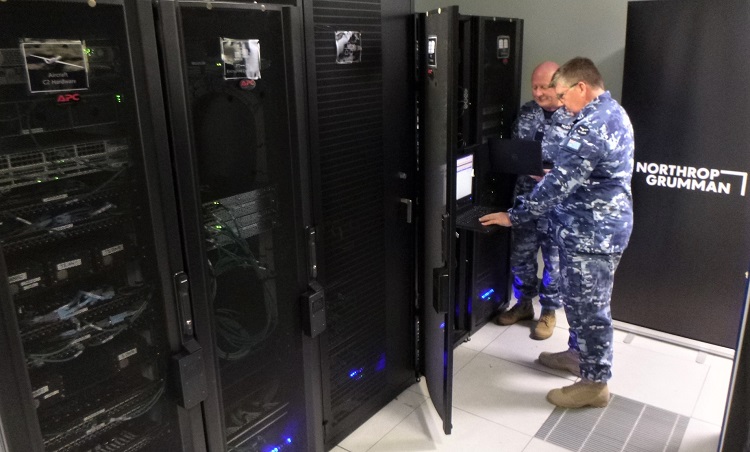Adding Triton to the ADF is an important step forward in building out the kind of long range ISR and C2 capabilities to empower the reach of the ADF.
Enhanced reach of the ADF is a key strategic goal of the Australian government as they re-focus on their region.
Recently, the US Navy ha announced that they have made their first tests wit the multi-intelligence upgrade to the program, which is a key capability which the RAAF was looking for when Australia signed up for the program.
In an article published by Australian Defence Business Review on December 17, 2021 and written by Andrew McLaughlin, the latest step in the build of the first RAAF Triton was highlighted:
Northrop Grumman has announced it has joined the wing and fuselage of the first MQ-4C Triton uncrewed high-altitude long-endurance maritime surveillance system for the Royal Australian Air Force.
The two major components were joined at Northrop Grumman’s manufacturing facility at the USAF Plant 42 at Palmdale in California. Production of the air vehicle commenced at the company’s Moss Point facility in Mississippi in late 2020, before the components came together at Palmdale for final assembly.
“This production milestone further demonstrates our commitment to both sides of the cooperative program between the Royal Australian Air Force and the U.S. Navy,” Northrop Grumman’s Triton program manager, Rho Cauley-Bruner said in a release. “We are on schedule to deliver Triton’s powerful capability in support of Australia’s national security.”
The US Navy’s Persistent Maritime Unmanned Aircraft Systems Program Manager, Capt Josh Guerre added, “This important milestone highlights the successful partnership between our two great nations, and reflects the collaborative work between industry and government in delivering this strategic capability to our Australian mates.”
The US Navy has had two Tritons based on Guam since early 2020 as part of an early operational capability of baseline IFC3-configured systems, and they have been flying regular missions over the region in support of US Navy surface vessel movements using their radar and optical sensors. One of these recently returned to NAS Jacksonville in Florida as US Navy air vehicle operators from the VUP-19 operating unit are trained on the latest IFC4 configuration which includes the Multi-Int signals intelligence (SIGINT) sensor.
And earlier in 2021, Northrop Grumman had delivered the Network Integration Test Environment Capability for the Triton to the RAAF
As ADBR noted in an article published on September 3, 2021:
Northrop Grumman Australia has announced it has delivered the Network Integration Test Environment (NITE) capability for the MQ-4C Triton high-altitude maritime UAS to the ADF.
Located at RAAF Edinburgh, the company says NITE, “will support Chief Information Officer Group (CIOG) to configure and test the array of Triton network interfaces and systems prior to the delivery of the first aircraft to Australia in 2023.” It says the system was delivered ahead of schedule, and is a key milestone in the Australian Triton program.

“This program will de-risk the first Triton aircraft arriving into Australia and leverage the expertise and lessons learned from Northrop Grumman and the US Navy,” Northrop Grumman Asia Pacific general manager, Christine Zeitz said in a company release. “We are establishing sovereign capability to support the Triton program which, once established, will revolutionise maritime ISR in the Indo-Pacific region.”
The NITE system is a follow-on from the company-funded mission system trainer (MST) which was installed at Edinburgh in 2016 and which was used to develop concepts of operation and requirements for the RAAF’s Triton program.
The RAAF currently has three Tritons on order – the first of which is in production – with up to seven air vehicles required to conduct maritime ISR operations in the Indo-Pacific region. The capability will be home-based at Edinburgh, with air vehicle forward deployed from RAAF Tindal in the Northern Territory, and at other locations.

